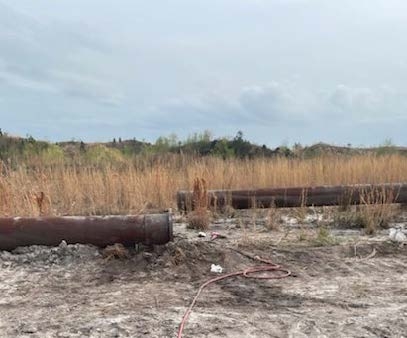OSHA Compliance Posts
Are you tired of playing the OSHA Compliance game that requires us to "comply" with standards that are 50 years old? The International Fire Code (IFC) is an excellent resource for taking your hazardous materials handling systems/processes to the next level. The IFC is used or adopted in 42 states, including the District of Columbia, Guam, Puerto Rico, and the U.S. Virgin Islands. This means that most states can enforce the code requirements but rarely do. But this is NOT about complying to make the government happy! It is about advancing our level of safety through enhanced ENGINEERING CONTROLS and DESIGN for our hazardous materials systems and the safety systems we rely on when we have an incident. I have believed in this Code since the start of my career when I worked in a state that enforced its Fire/HAZMAT code, and we got regular inspections by the Authority Having Jurisdiction (AHJ). Hence, I have written or referenced the IFC in over 500 articles on SAFTENG. The ICC offers FREE Access to their codes: CLICK HERE SAFTENG Members can download my training presentations on some of the requirements from this code. Add new comment
How do you differentiate between an amputation without bone and avulsions?
This article aligns with my previous article, "When are High-Vis garments no longer considered High-Vis?" It is in the same spirit of managing the PPE that so many workers rely on daily. And anyone who has been in safety for six months or longer can tell us horror stories of what they have seen with workers wearing and claiming some PPE is "protecting them." Although OSHA does not require EH-rated safety footwear, many employers specify this rating for certain employees who may do "electrical work." If we specify that their safety footwear carries the EH (Electrical Hazard) designation, then should we not work to maintain that designation? First, what does it mean when safety footwear has the EH designation?
We visit 25-30 facilities each year, with about 15% of those being first-time and last-time visits! And man-o-man, we see some crazy things. I may have unreasonable expectations of safety, but complying with OSHA standards that have been on the books for 50+ years should not be a battle we are still fighting today. Take basic safety signage for example. The OSHA standard on accident prevention signs and tags (1910.145) has been around since 1974, and although a lot of facilities rely on these signs as reminders to work safely or to point out specific hazards, they are often made "in-house" and fall well short of complying with the OSHA standard and a far cry from the ANSI standards ANSI Z535 series. The number of facilities and their safety personnel who are not even aware of these fundamental requirements is shocking. Then, listen to their complaints regarding the Audit/Assessment findings about how "nit-picky" we are. Sayings like "that faded sign never hurt anyone" are astounding. It is a short and easy standard to read and understand. You don't need to attend an OSHA outreach course, hire a consultant, or spend a lot of time or money to get these basics under control. Let's start with the two (2) classes of signs OSHA prescribes: (emphasis by me)
The miner was removing the last bolt connecting two metal slurry pipes when the pipe broke free and swung in his direction. Best Practices • Prevent miners from positioning themselves in a manner that will expose them to hazards while performing a task. • Examine work areas before and during the shift for hazards. • Ensure that blocking material is competent, substantial, and adequate to stabilize the load. • Train miners in safe work procedures and hazard recognition. • Monitor personnel routinely to ensure they follow safe work procedures This is the third fatality reported in 2024, and the first classified as “Machinery” CLICK HERE for MSHA Alert
Yes. OSHA's standards at 29 CFR § 1910.212 and 29 CFR § 1910.219 apply to the safeguarding of machines and mechanical power-transmission equipment and require guarding to protect the operator and other employees in the area from hazards such as those created by ingoing nip points, rotating parts, flying chips, and sparks. In regard to the gap dimension between belts and their respective guards, § 1910.219 (e)(1)(i) states:
Please note that the requirements for guarding belts contained in 29 CFR § 1910.219 do NOT apply to the following types of belts when they are operating at two hundred and fifty (250) feet per minute or less: |
Partner Organizations I am proud to announce that The Chlorine Institute and SAFTENG have extended our"Partners in Safety" agreement for another year (2024) CI Members, send me an e-mail to request your FREE SAFTENG membership
Member Associations
|
 On March 1, 2024, a miner died after a metal slurry pipe struck him.
On March 1, 2024, a miner died after a metal slurry pipe struck him.












